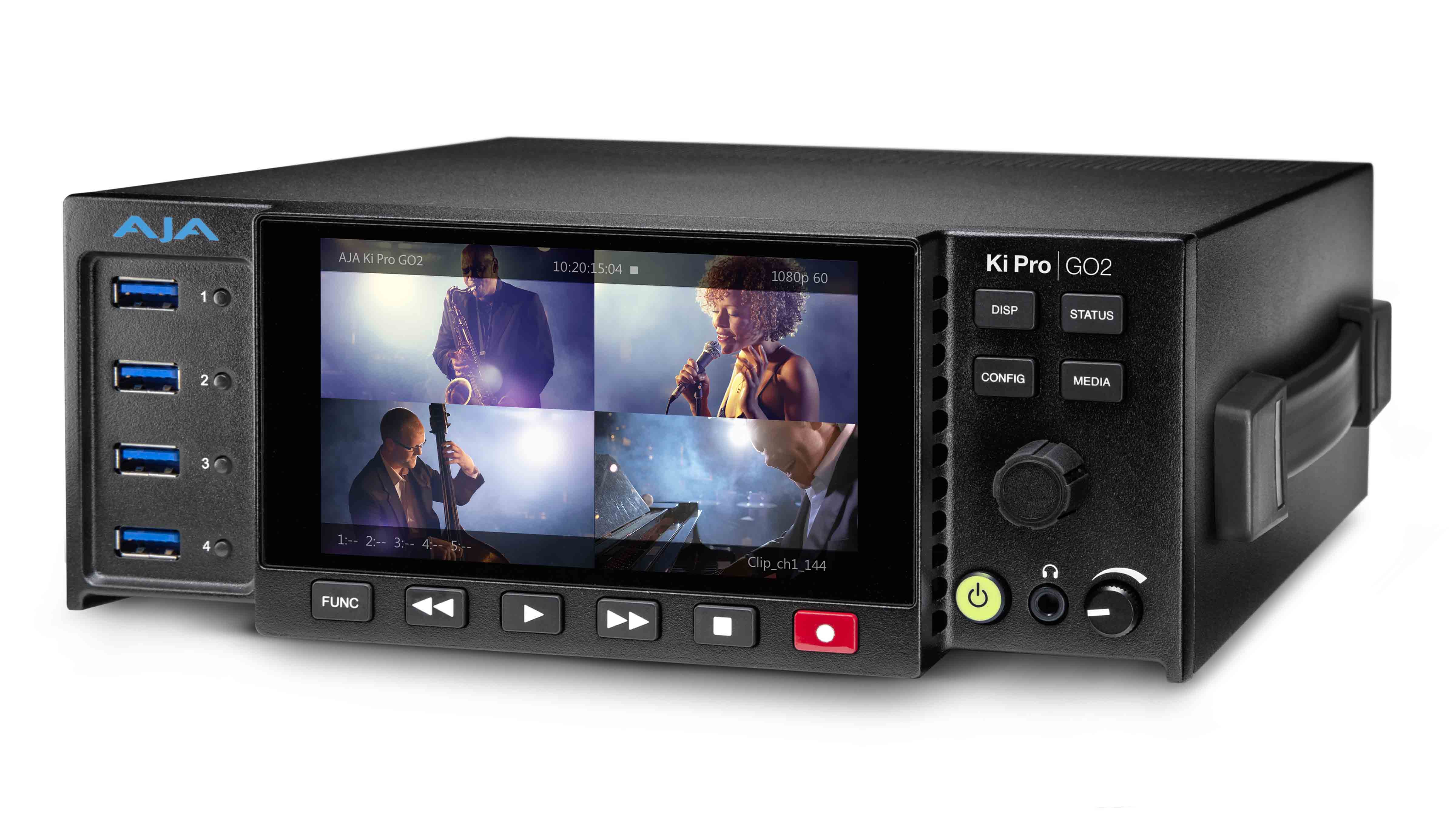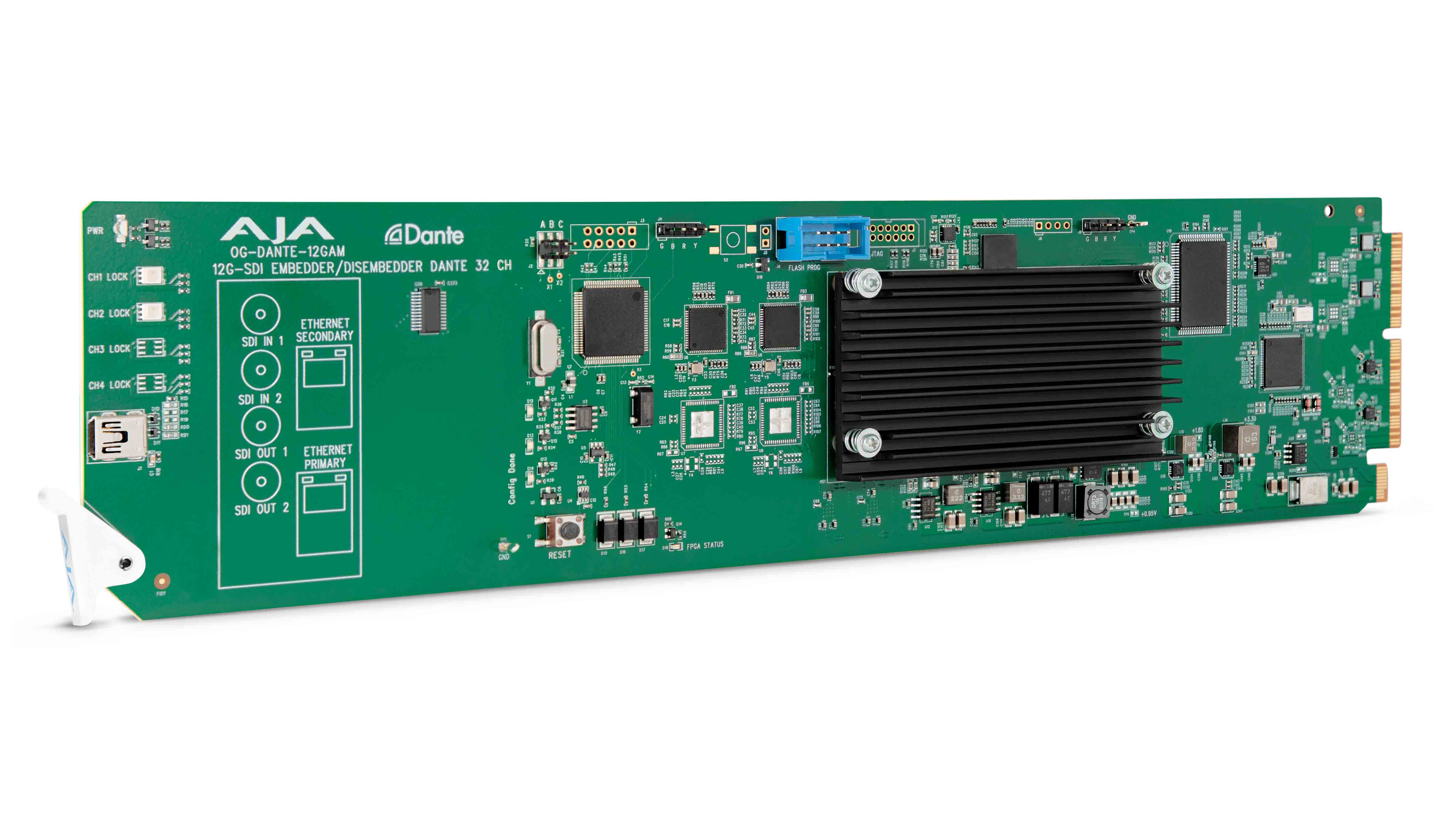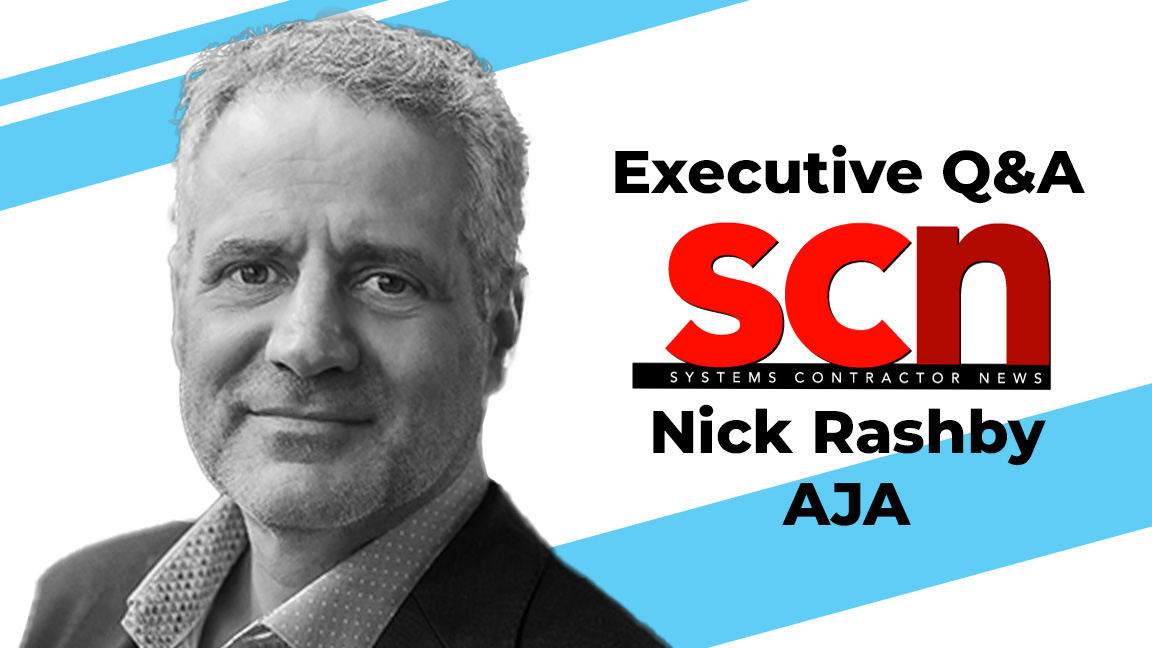SCN: How long have you been with this company, and what are your responsibilities?
Nick Rashby: I’ve been with AJA for over 20 years. I joined the company as the sales manager for desktop products in 2003 and was promoted to director of sales and marketing shortly after. In 2007, I became president of the company. As part of the executive management team, I help oversee day-to-day operations of worldwide activities from AJA’s Grass Valley, CA, headquarters.

SCN: The Ki Pro product line is about as universal as it gets. What made the company decide to pursue digital recorders/players, and when did you know you had a hit?
NR: In 2009, when we launched the original Ki Pro, there wasn’t a ProRes recorder on the market. AJA was the very first company to implement the ProRes codec in hardware, which we did for the Io HD that we introduced in 2007. We then implemented it in Ki Pro, which was built to mimic a VTR, so anyone familiar with a VTR would feel comfortable operating it, but it recorded to hard drive and SSD modules instead of tape.
[Executive Q&A: Talking Points]
The idea was for AV teams and production crews to be able to give editors access to high-quality files they could use immediately after a shoot to edit in Apple’s Final Cut Pro software. Seeing this hadn’t been done before, it was an instant hit the moment we released it on the market. Since then, we’ve continued to evolve the Ki Pro line.
SCN: What makes Ki Pro different from other products on the market?
NR: Like all AJA products, our Ki Pro recorders are designed and assembled here in Grass Valley and provide the stability and reliability that AJA gear is known for. That matters in a profession like AV, where you’ve only got one chance to capture an event; a recorder failing or dropping frames in the field isn’t an option, because you can’t get that moment in time back. Our new Ki Pro GO2 is unique in its own right because it supports simultaneous, real-time network recording. You can record multiple channels of H.264 or H.265 to your USB drive, and at the same time, capture real-time footage to the network, which helps when creating fast turnaround highlights clips.

SCN: Is 12G-SDI a popular choice in the Pro AV space?
NR: We’ve seen an uptick in interest for AJA’s 12G-SDI solutions in the last few years, especially as more AV installers and teams take advantage of higher resolutions and HDR to create more compelling audience experiences, whether producing a live concert or streaming a college sports match. As some teams’ legacy 3G-SDI equipment comes due for replacement, we’re seeing more investment in 12G-SDI. Even if they may not be working in UltraHD and HDR today, many see the industry heading in that direction for the future, and 12G-SDI provides the bandwidth to support those needs. Plus, it’s backward-compatible, so it can also support current 3G-SDI gear.
SCN: How has 4K changed the Pro AV landscape, and is 8K poised for a similar impact?
NR: 4K is starting to catch on more in Pro AV, especially for large-scale events featuring massive LED walls and dynamic graphics, and there’s growing interest in 8K, especially in the Asia Pacific region, but UltraHD adoption depends on the setting and region. While you may not see 4K or 8K displays at a high school or smaller church, there are large-scale concert halls, venues, and even museums utilizing the technology. We’re far off, however, from 8K becoming a Pro AV standard, especially seeing that some countries are still working in HD or even SD.
There’s growing interest in IP and HDR workflows in the AV space, and now is the time to get up to speed on the technologies required to support them.
There’s actually a ton of interest in HDR, which complements 4K and 8K workflows, allowing teams to create more visually lifelike audience experiences. Demand for our AJA ColorBox, a real-time color management tool, has grown alongside this trend. The device is making it easier for AV professionals to color match cameras in live productions to ensure a more cohesive look. We also have our FS-HDR device, which is used on a host of live productions to support conversions between different standards of HDR, SDR, and more.
SCN: How is Thunderbolt different from USB-C, and how important are these interfaces to Pro AV?
NR: The easiest way to think about Thunderbolt is that it is a superset of USB-C; you can plug a USB-C device into a Thunderbolt 3 or 4 port on a PC and it'll work just fine, but if you plug a Thunderbolt 3 or 4 cable/device into a Thunderbolt port, you’ll get a maximum of 40 Gbps of bandwidth, compared to the 20 Gbps maximum on USB-C. Thunderbolt 3 guarantees a minimum bandwidth for data transfer of 16 Gbps, while Thunderbolt 4 guarantees a minimum bandwidth of 32 Gbps, giving you even more confidence that the system will “just work.” Thunderbolt 4’s massive bandwidth means that a single cable from your computer is all you need to drive two or more 4K 60Hz monitors. It also means you have much more headroom for transferring media into a device.
SCN: AJA has an extensive catalog of converters, but what are the most popular converters you offer?
NR: AJA Mini-Converters cover a full range of 4K, HD, and SD capabilities, and our free Mini-Config software for Windows or macOS can be used with any USB-enabled AJA Mini-Converter to configure and control all the parameters of the supported AJA Mini-Converter. It can also be used to load AJA firmware updates, which often deliver new performance enhancements and features, and provides information about current I/O formats.
Additionally, in recent years, we’ve seen demand, particularly from the AV space, to bring our Mini-Converter functionality into the openGear format, so we’ve developed a robust offering of openGear conversion solutions. Today, we offer over 20 different openGear cards. With the rise of Dante audio, our OG-DANTE-12GAM 64-channel embedder/disembedder has been incredibly popular with the AV market, especially in house of worship settings.

SCN: How can systems contractors better position themselves to profit from products and/or services you have to offer?
NR: It all comes down to education and communication. There’s growing interest in IP and HDR workflows in the AV space, and now is the time to get up to speed on the technologies required to support them. Spend time talking to your technical sales reps about these trends as they relate to your clients.
SCN: What’s the next big thing for Pro AV?
NR: AV-over-IP workflow adoption is going to continue to soar, and with differing approaches, it’s important for AV professionals to understand their options, as well as be able to bridge between SDI, SMPTE, NDI, and Dante, which is where AJA technology can be helpful. We’re also going to see more energy and enthusiasm around HDR, and in turn color management, which is going to spur more dynamic experiences across the AV space. Augmented and mixed reality will play a role there, too.

